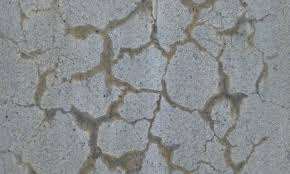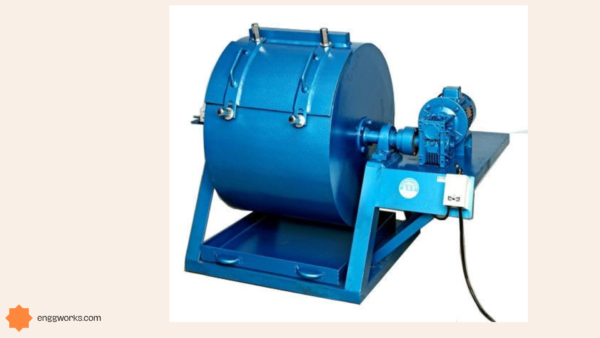Spider cracks in concrete can look harmless at first glance, but they actually undermine structural integrity if left unchecked.
Concrete is one of the most durable and versatile construction materials, used in everything from sidewalks to skyscrapers.
However, after years of use and exposure to the elements, cracks can develop in concrete structures.
One of the most common types of cracks is known as “spider cracks” due to their spindly, web-like appearance.
Spider cracks in concrete consist of multiple hairline cracks spreading out from a central point and extending in several directions across the concrete surface.
Though they may seem harmless at first glance, spider cracks in concrete can present serious structural issues if left unaddressed.
These cracks provide pathways for water and debris to penetrate the slab, exacerbating deterioration through freeze-thaw cycles in colder climates.
Furthermore, spider cracks reduce the integrity and load-bearing capacity of concrete.
Over time, they may spread and connect to form larger cracks and faults.
Addressing spider cracks in concrete before they have a chance to expand is crucial for preventing safety hazards and costly repairs down the road.
Correctly diagnosing and treating these common concrete defects will help proactively maintain durable, long-lasting concrete surfaces.
Spider Cracks in Concrete
Spider cracks in concrete, also called spider cracks or map cracks, are common in concrete slabs and walls.
They usually begin from a central point and spread outward with a spindly, spider-like pattern, resembling a web.
Spider cracks in concrete result from normal exposure, wear and tear, or bouts of heavy stress over time.
Though hairline and garden-variety at first, spider cracks can expand into larger faults as water infiltrates and erodes from within.
Left untreated, a spider of cracks compromises structural integrity and durability down the road.
It’s crucial to address these cracks before they spread and connect into more hazardous gaps or faults.

What Causes Spider Cracks in Concrete?
Several key factors cause spider crack development:
- Shrinkage – As concrete cures and dries over time, it undergoes normal shrinkage. But restricted movement results in surface cracks.
- Settling – Settling and shifts in the soil or base under concrete introduces stresses that manifest as surface cracks.
- Freezing Weather – In cold climates, water seeping into hairline cracks, expanding when frozen, then contracting causes cracks to expand each winter.
- Heavy Loading – Concentrated heavy loads produce surface cracks that resemble a spider web.
Many cases of spider cracking arise from a combination of these factors over months or years.
Early web cracks then spread from constant stresses, weather changes, and subgrade movement.
Acceptable Cracks in Concrete Slabs
Not all spider web cracks in concrete demand full repairs.
According to industrial standards, these qualifications help determine if cracks are acceptable as-is:
- Hairline cracks less than 1/64 inch wide very likely present no current issue.
- Cracks around 1/8 inch wide or less may be acceptable if they do not span the entire slab or block wall.
- The surface should show no vertical displacement or sunken areas across larger cracks.
- No loose debris or concrete fragments exist along the cracks.
- The slab or wall should not show signs of a failure plane – meaning cracks have not fully penetrated the slab thickness.
If your spider cracks meet these conditions, they likely require no immediate repairs.
However, do monitor their width and length seasonally.
Use crack gauges and photos to track changes over time. Expanding width or length would indicate repairs are needed.
How to Prevent Spider Cracks in concrete
Numerous proactive steps during pouring and curing can minimize spider cracks in concrete down the road:
Proper Concrete Mix Design- A low water/cement ratio and inclusion of polypropylene fibers increase tensile strength and flexibility to resist shrinkage cracks.
Control Joints- Strategic control joints relieve internal stresses, guiding intentional cracks to desired locations. Control joint design, depth, spacing, and timing proves critical.
Curing Protection- Proper curing maintains moisture while concrete hardens, preventing premature drying and shrinkage. Use wet burlap, fog misting, or curing compounds to protect freshly placed concrete.
Base Layer Prep- An evenly graded and compacted base or sub-base prevents differential settling stresses on the slab.
Cold Weather Pouring Precautions- In cold climates, follow detailed specifications for mixing, placing, protecting, and curing concrete during freezing conditions.
With diligent quality control and preventative measures in the concrete itself and its underlying base layers, spider web cracks can be minimized or avoided altogether.
Identifying Spider Cracks vs Other Concrete Cracks
Not all concrete cracks indicate a spider web pattern. Here are tips on positively identifying spider cracks compared to other faults:
Map Cracking- Map cracks share the same causes and remedies as spider cracks. Both have a centralized origin with spindly extensions. They indicate concrete shrinkage.
Craze Cracking- Craze cracks manifest as shallow, random, irregular cracks across large areas of concrete, normally from finishing operations. They present little structural concern.

Control Joint Cracks- Control joints are intended, designed cracks at predetermined locations. Check for proper joint depth, spacing, and sealants to prevent unintended cracking between joints.
Structural Cracks- Major singular cracks or offset sections likely signify a structural problem like settling. They require inspection and repairs from a structural engineer.
Only spider and map cracks showcase a centralized web pattern with branching hairline faults. Take note of any cracks matching this formation and measure their width annually to gauge spreading severity.
How to Fix Spider Cracks in concrete
Minor spider cracks under 1/8 inch wide may seal successfully with suitable caulking or repair compounds. For wider faults or multiplying spider cracks, more robust repairs prove necessary:
Rout and Seal
Use a concrete saw to open cracks into a “V” shape, blow out debris, then fill and seal with flexible polyurethane or silicone sealants.
Epoxy Injection
Epoxy injection fills cracks deep inside the slab or wall while sealing the surface. It restores structural strength.
Overlay Patch
Removing and replacing the damaged section with a fresh concrete overlay eliminates cracks and restores the surface plane.
Slab Replacement
In severe cases with widespread cracking or crack-induced faults, full slab removal and replacement becomes the only option. Seek professional concrete contractors.
The best defense remains diligent prevention in mix design, joint planning, base prep, and curing for new pours.
But for existing spider web cracks, timely identification, monitoring, and repairs can maintain lasting concrete integrity.
Don’t let spider cracks span into larger fissures compromising safety and structure.







